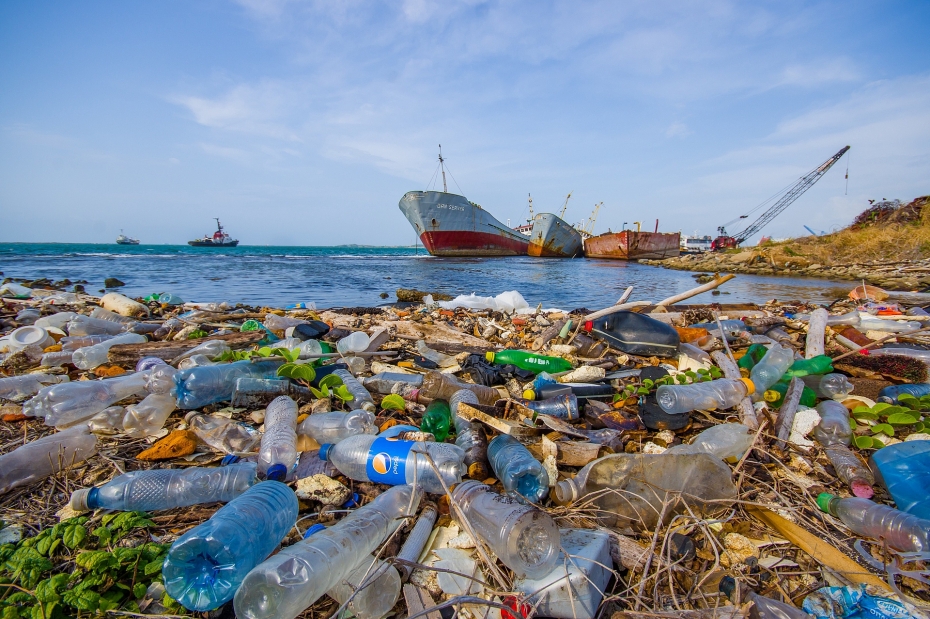Hunufa đã chuyển sang website mới tại https://hunufa.vn/ từ ngày 01/01/2024. Dữ liệu trên Hunufa.com hiện không còn được cập nhật.
While we are still having a headache with the problems that plastic waste causes, microplastics have silently crept into most land and water environments, seriously threatening the ecosystem and having a significant impact. to human health. According to a study by the University of Newcastle - Australia in 2018, the average person eats about 5g of plastic a week, equivalent to a credit card. So what is microplastics ? Where do microplastics come from? Where do microplastics exist? What are the harmful effects of microplastics? What measures to limit microplastic particles and its harmful effects? Let's find out with HUNUFA through the article below!
What are microplastics?
Microplastics (English: microplastics) are small plastic samples found in the environment, with a diameter of less than 5mm.

Where do microplastics come from?
The origin of microplastics is quite diverse. It can be produced in small sizes (microbeads) in products such as toothpaste, scrubs, etc. to meet the needs of users. These particles follow the drainage route to streams and rivers and finally concentrate to the sea. In addition, microplastics also form from the decomposition of large pieces of plastic or plastic items in the environment.
Microplastics are found all over the world in oceans, rivers, soil and many other environments. They are then consumed by the animals.
Facial cleansers, toothpastes, scrubs, shower gels, etc. in their composition all have a certain amount of microplastic particles. These are usually tiny, colorful seeds. They can penetrate deep into the skin, although removing sebum and dirt, they also affect human health more or less. The percentage of microplastic particles is not uniform in different products, can account for 1% to over 90% of the total weight of the product.

Microplastics in bottled water
In the filtered water bottles we use every day, there are thousands of microplastic particles. When in an environment of high humidity and temperature or exposed to direct sunlight, the plastic decomposition process will accelerate, releasing harmful substances into the water.
It can be clearly seen that in the process of production and daily life, people discharge a large amount of plastic containing many microplastic particles into the environment. If not handled properly and properly, these substances will directly harm the soil environment and water sources such as ponds, lakes, rivers, streams, seas, etc.
Plants and organisms will absorb these microplastics. Animals sometimes mistake plastic waste for food, so they eat it by mistake and accumulate in the body.

Microplastics in food
Until people used food from animals to make food. Then we also inadvertently absorb harmful microplastic particles into the body.
Many studies have found that about 90% of birds have microplastics in their stomachs. This figure in aquatic animals is almost 100%. They also found 600 microplastics per kilogram of honey and 109 microplastics per liter of beer
As mentioned above, seawater contains a large amount of microplastic particles. So obviously salt will also contain this grain. One study examined 15 different brands of sea salt and found as many as 600 microplastics per kilogram of salt.

Microplastics in salt
This makes quite a lot of consumers hesitate to use this salt. Because salt has long become an essential seasoning in family meals. However, there is research that shows that the number of microplastic particles in salt is quite small, just under 40 particles per year and is not considered a risk factor..
Many reports indicate that there is also a risk of contamination from microplastics in the air. They can cause incalculable harm to human respiratory organs.
When these microplastics are inhaled, they will be absorbed into the bloodstream and transported to all organs.
With the amount released into the environment increasing significantly, plastic particles cause serious consequences.

Microplastics pollute the environment
Like plastic, microplastics are difficult to decompose, and over time, they will accumulate in the environment, causing air pollution and water pollution.
Phthalate, a chemical used to plasticize plastics, has been shown to increase the growth of cancer cells.
There is a test to evaluate the effects of microplastics in mice conducted recently, showing that when fed to mice, microplastics accumulate in the liver, kidneys and intestines, increasing the levels of oxidants in the liver. They also cause brain-toxic molecules to increase.
In addition, when eating food contaminated with microplastic particles, human health also declines.
Microplastics exist in many places, in water, in food, even in the air we breathe. With the increasing demand for plastic in the current industrial era, the environment is suffering more plastic waste than ever before. So let's join hands to protect the environment to have a clean and green life!
To choose plastic products that are not harmful to health, go to HUNUFA right away. As a company specializing in the production of disposable products to ensure food hygiene - Environmental protection.
HUNUFA VIETNAM CO., LTD
• Address: Lot M19A, Road No. 7, Hai Son Expanded Industrial Park (GD 3+4), Duc Hoa Ha Commune, Duc Hoa Dist., Long An Town
• Representative Office: 168 – 170 – 172 – 174, Street 34, Binh Tri Dong B Ward, Binh Tan, Ho Chi Minh City
• Hotline: 0777 537 537
• Email: [email protected]
• Website: https://hunufa.com
: 31/05/2023
: 13/05/2023
: 14/04/2023
: 14/01/2023
: 10/11/2022